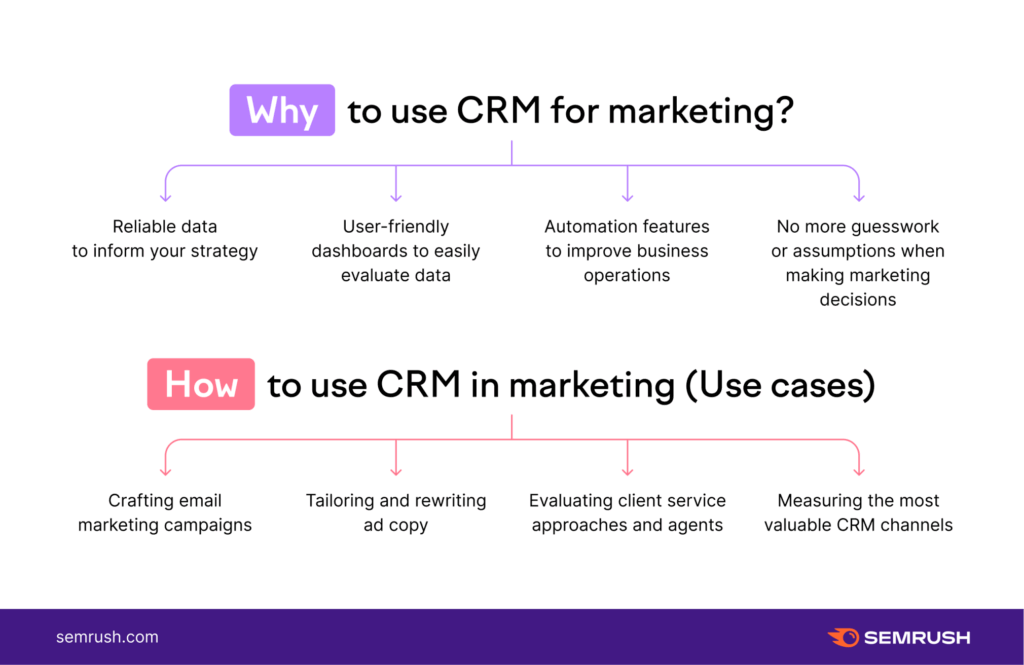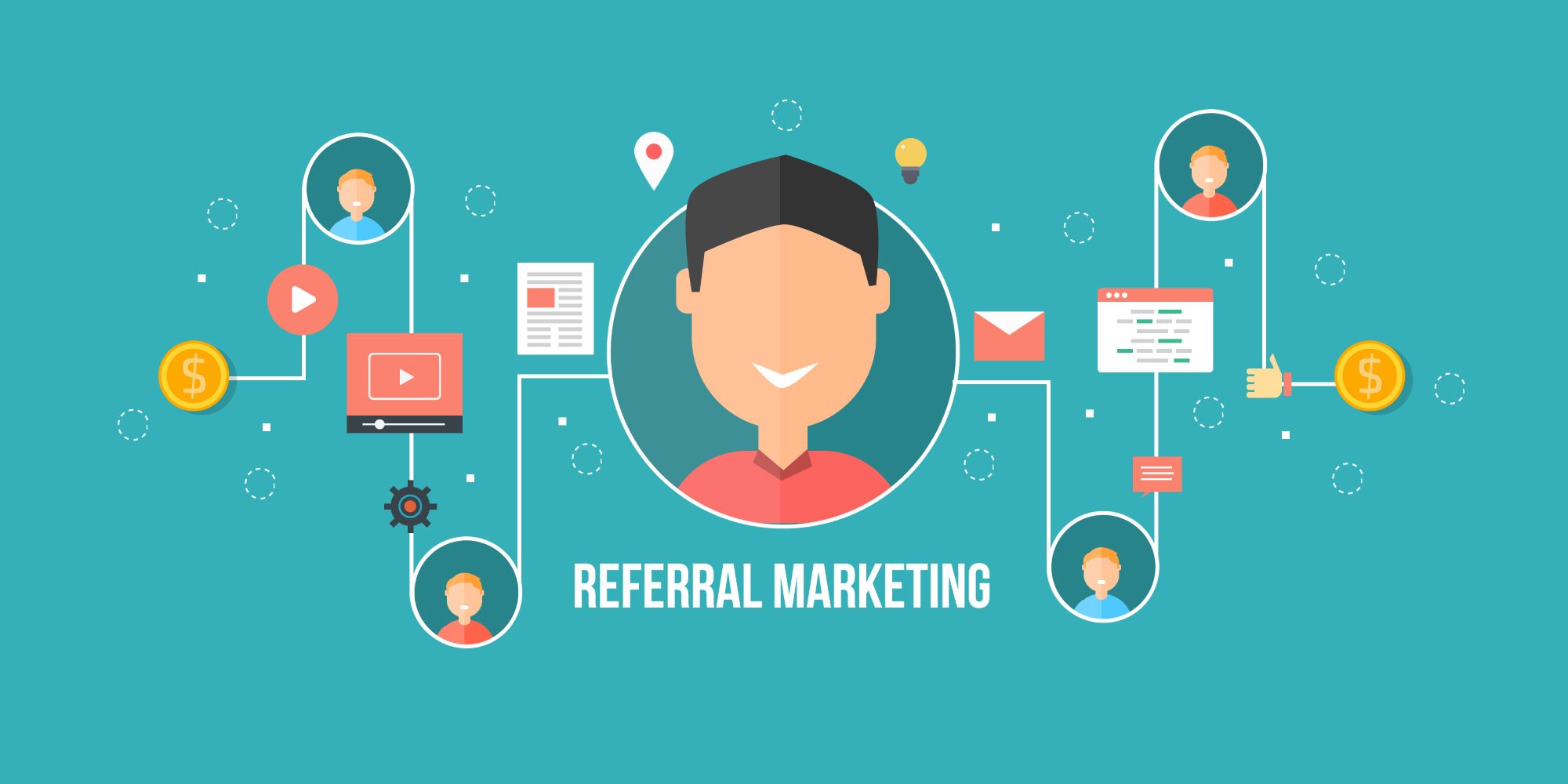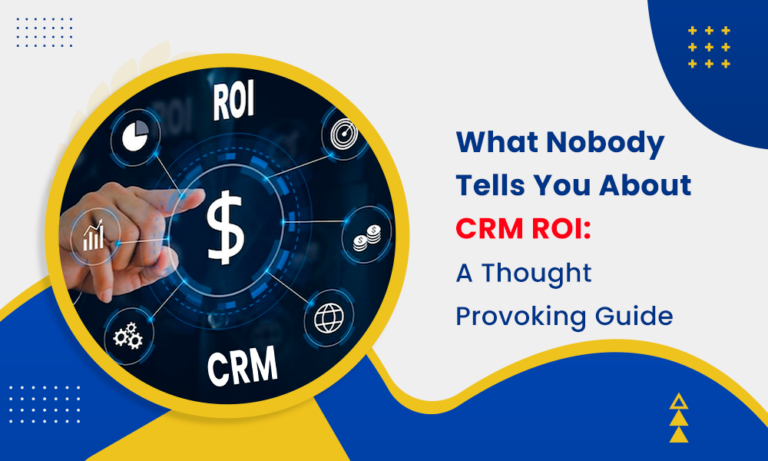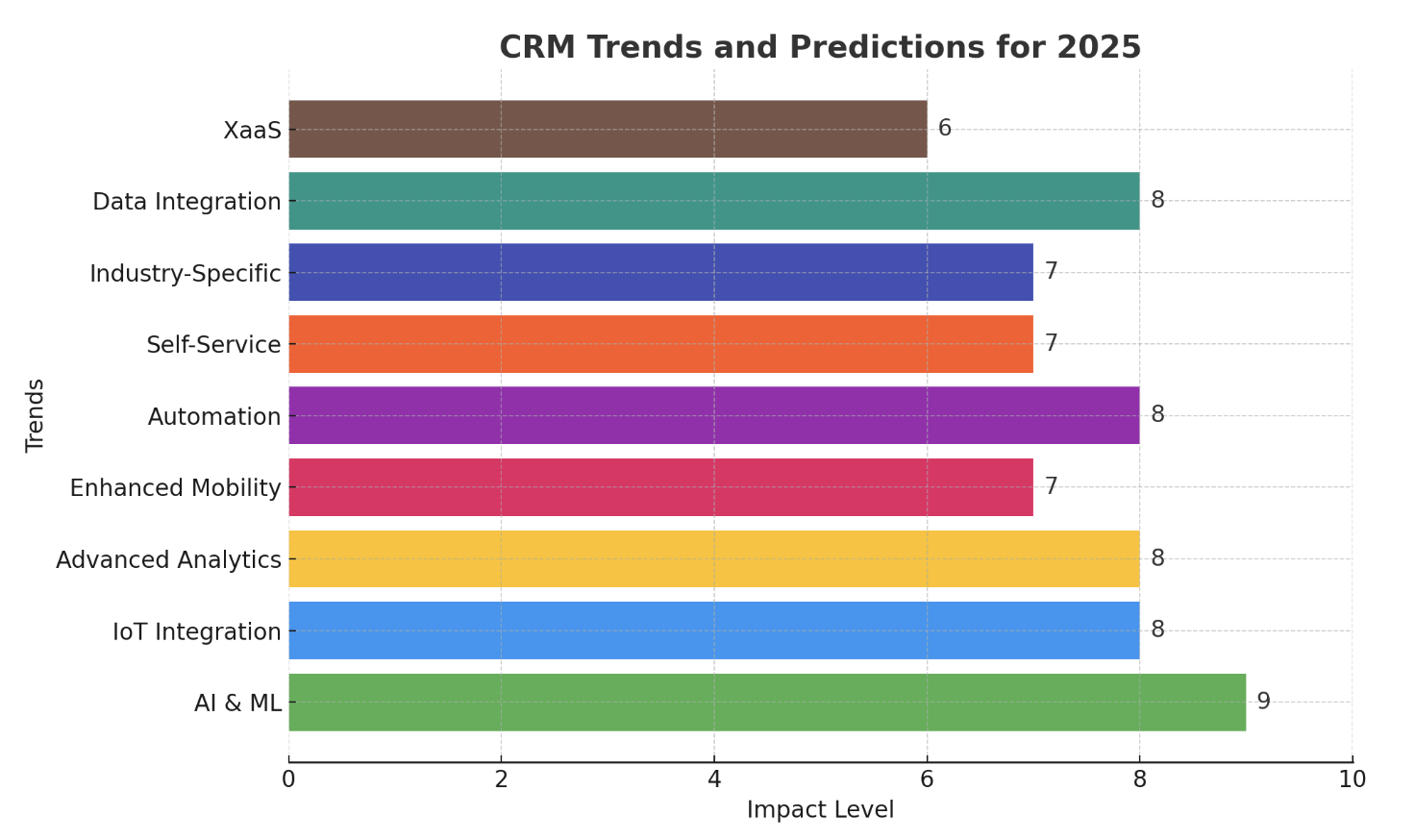
Unlock CRM Marketing Potential: Expert Optimization Tips for Maximum Impact
In today’s hyper-competitive business landscape, simply having a Customer Relationship Management (CRM) system isn’t enough. To truly thrive, you need to optimize your CRM marketing efforts. This means leveraging your CRM to its fullest potential, transforming it from a data repository into a powerful engine for customer acquisition, engagement, and retention. This comprehensive guide dives deep into actionable CRM marketing optimization tips, providing you with the strategies and insights you need to elevate your marketing game and achieve remarkable results.
Why CRM Marketing Optimization Matters
Before we dive into the specifics, let’s understand why CRM marketing optimization is so crucial. A well-optimized CRM system can:
- Improve Customer Understanding: Gain deeper insights into customer behavior, preferences, and needs, allowing for more personalized and effective marketing.
- Enhance Customer Experience: Deliver seamless and personalized interactions across all touchpoints, fostering stronger customer relationships.
- Boost Sales and Revenue: Drive sales growth by identifying and targeting high-potential leads, nurturing them through the sales funnel, and maximizing customer lifetime value.
- Increase Marketing Efficiency: Automate repetitive tasks, streamline workflows, and optimize marketing campaigns, freeing up your team to focus on strategic initiatives.
- Reduce Costs: Minimize wasted marketing spend by targeting the right customers with the right messages at the right time.
In essence, CRM marketing optimization is about maximizing the value you derive from your CRM investment. It’s about transforming data into actionable intelligence and using that intelligence to drive business growth. Let’s explore some practical tips to help you achieve just that.
1. Define Clear Goals and Objectives
The foundation of any successful CRM marketing strategy is clearly defined goals and objectives. What do you want to achieve with your CRM? Are you looking to increase sales, improve customer retention, or enhance customer satisfaction? Your goals should be SMART: Specific, Measurable, Achievable, Relevant, and Time-bound.
Examples of SMART goals:
- Increase lead conversion rate by 15% within the next quarter.
- Reduce customer churn rate by 10% within the next six months.
- Increase customer lifetime value by 20% within the next year.
Once you’ve established your goals, you can develop a roadmap to achieve them. This roadmap should outline the specific actions you need to take, the resources you’ll need, and the metrics you’ll track to measure your progress. Without clear goals, you’ll be navigating your marketing efforts blindfolded, making it impossible to gauge success or make data-driven adjustments.
2. Segment Your Audience for Targeted Campaigns
One of the most powerful features of a CRM system is its ability to segment your audience. Segmentation involves dividing your customer base into distinct groups based on shared characteristics, such as demographics, purchase history, behavior, and preferences. This allows you to create highly targeted marketing campaigns that resonate with specific customer segments.
Here are some common segmentation criteria:
- Demographics: Age, gender, location, income, education, etc.
- Purchase History: Products purchased, frequency of purchases, average order value, etc.
- Behavior: Website activity, email engagement, social media interactions, etc.
- Preferences: Product interests, communication preferences, etc.
- Lifecycle Stage: Lead, prospect, customer, loyal customer, churned customer.
By segmenting your audience, you can tailor your messaging, offers, and content to each group’s specific needs and interests. This leads to higher engagement rates, improved conversion rates, and increased customer satisfaction. Consider using your CRM’s built-in segmentation tools, or integrate with third-party data providers to enrich your customer profiles and refine your segmentation strategies.
3. Leverage Automation to Streamline Workflows
Automation is a game-changer when it comes to CRM marketing optimization. By automating repetitive tasks, you can free up your team’s time to focus on more strategic initiatives, such as campaign planning, content creation, and customer relationship building. CRM systems offer a wide range of automation capabilities, including:
- Email Marketing Automation: Set up automated email sequences for lead nurturing, welcome emails, abandoned cart recovery, and more.
- Lead Scoring: Automatically score leads based on their behavior and engagement, allowing you to prioritize the most qualified leads.
- Task Automation: Automate tasks such as data entry, follow-up reminders, and task assignment.
- Workflow Automation: Create automated workflows to streamline processes such as sales pipeline management and customer onboarding.
When implementing automation, start small and gradually expand your automation efforts as you gain experience. Make sure to monitor your automated workflows regularly to ensure they’re performing as expected and making the desired impact.
4. Personalize Your Customer Interactions
In today’s world, customers expect personalized experiences. They want to feel valued and understood. CRM systems provide the data you need to deliver personalized interactions across all touchpoints. This includes:
- Personalized Email Marketing: Use customer data to personalize email subject lines, content, and offers.
- Website Personalization: Tailor website content and experiences based on customer behavior and preferences.
- Sales Interactions: Equip your sales team with customer insights to personalize their conversations and tailor their pitches.
- Customer Service: Provide personalized support based on customer history and preferences.
Personalization goes beyond simply using a customer’s name in an email. It’s about understanding their needs, preferences, and behaviors and using that information to deliver relevant and valuable content and experiences. The more personalized your interactions, the more likely you are to build strong customer relationships and drive loyalty.
5. Integrate Your CRM with Other Marketing Tools
To maximize the power of your CRM, integrate it with other marketing tools you use, such as email marketing platforms, social media management tools, and marketing automation platforms. Integration allows you to share data seamlessly between your tools, creating a unified view of your customers and streamlining your marketing workflows.
Here are some key integrations to consider:
- Email Marketing Platforms: Sync customer data between your CRM and email marketing platform to create targeted email campaigns.
- Social Media Management Tools: Track social media interactions and use customer data to personalize your social media messaging.
- Marketing Automation Platforms: Automate complex marketing workflows, such as lead nurturing and customer onboarding.
- E-commerce Platforms: Integrate your CRM with your e-commerce platform to track customer purchases and personalize product recommendations.
By integrating your CRM with other marketing tools, you can create a more cohesive and effective marketing ecosystem. This will help you gain a 360-degree view of your customers, improve your marketing efficiency, and drive better results.
6. Track and Analyze Your Results
Data is your best friend when it comes to CRM marketing optimization. You need to track and analyze your results to understand what’s working and what’s not. Your CRM system should provide robust reporting and analytics capabilities. Key metrics to track include:
- Lead Conversion Rate: The percentage of leads that convert into customers.
- Customer Acquisition Cost (CAC): The cost of acquiring a new customer.
- Customer Lifetime Value (CLTV): The predicted revenue a customer will generate over their lifetime.
- Churn Rate: The percentage of customers who stop doing business with you.
- Email Open Rate: The percentage of emails that are opened.
- Click-Through Rate (CTR): The percentage of recipients who click on a link in your email.
- Return on Investment (ROI): The return on your marketing investments.
Regularly review your reports and analytics to identify trends, measure the effectiveness of your campaigns, and make data-driven adjustments to your strategy. Use A/B testing to experiment with different messaging, offers, and calls to action to optimize your campaigns for maximum impact. The more you analyze your data, the better you’ll understand your customers and the more effective your marketing efforts will become.
7. Clean and Maintain Your Data
The quality of your data is critical to the success of your CRM marketing efforts. Inaccurate, incomplete, or outdated data can lead to wasted marketing spend, poor customer experiences, and damaged relationships. Regularly clean and maintain your CRM data to ensure its accuracy and completeness.
Here are some data hygiene best practices:
- Data Validation: Implement data validation rules to prevent incorrect data from entering your system.
- Data Deduplication: Regularly identify and merge duplicate records.
- Data Enrichment: Supplement your customer data with additional information from third-party data providers.
- Data Auditing: Regularly review your data to identify and correct errors.
- Data Governance: Establish clear data governance policies and procedures to ensure data quality.
By maintaining clean and accurate data, you can ensure that your marketing efforts are targeted, effective, and deliver the best possible customer experiences.
8. Train Your Team on CRM Best Practices
Your CRM system is only as good as the people who use it. Provide comprehensive training to your team on CRM best practices, including data entry, data management, campaign creation, and reporting. This will ensure that everyone is using the CRM effectively and consistently.
Training should cover:
- CRM Functionality: Provide a thorough understanding of the CRM’s features and capabilities.
- Data Entry and Management: Teach your team how to enter and manage data accurately and consistently.
- Campaign Creation: Train your team on how to create and manage marketing campaigns within the CRM.
- Reporting and Analytics: Show your team how to generate and interpret reports.
- Best Practices: Share best practices for using the CRM to maximize its effectiveness.
Ongoing training is essential to keep your team up-to-date on the latest CRM features and best practices. Consider providing refresher courses, webinars, and access to online resources.
9. Embrace Mobile CRM
In today’s mobile-first world, it’s essential to embrace mobile CRM. Mobile CRM allows your team to access customer data and manage their activities from anywhere, anytime. This can significantly improve productivity and responsiveness.
Benefits of Mobile CRM:
- Increased Productivity: Sales reps can access customer data and update their activities on the go, saving time and improving efficiency.
- Improved Responsiveness: Sales reps can respond to customer inquiries and opportunities in real-time.
- Better Customer Service: Customer service reps can access customer history and provide personalized support from anywhere.
- Real-time Data Access: Access to real-time data allows for better decision-making.
Make sure your CRM has a mobile app or is optimized for mobile devices. Train your team on how to use the mobile CRM effectively. Encourage your team to use the mobile CRM to stay connected and productive, even when they’re away from their desks.
10. Foster a Customer-Centric Culture
Ultimately, the success of your CRM marketing efforts depends on your company’s culture. Foster a customer-centric culture where everyone is focused on providing exceptional customer experiences. This means:
- Prioritizing Customer Needs: Make customer needs the top priority in all your business decisions.
- Empowering Your Team: Empower your team to make decisions that benefit the customer.
- Collecting and Acting on Customer Feedback: Actively solicit customer feedback and use it to improve your products, services, and customer experiences.
- Celebrating Customer Success: Recognize and reward your team for providing exceptional customer service.
A customer-centric culture will drive customer loyalty, advocacy, and ultimately, business growth. CRM marketing optimization is a journey, not a destination. By consistently refining your strategies, embracing new technologies, and fostering a customer-centric culture, you can unlock the full potential of your CRM and achieve remarkable marketing success.
11. Staying Updated with CRM Trends
The world of CRM marketing is constantly evolving. New technologies, strategies, and best practices emerge regularly. To stay ahead of the curve, it’s crucial to stay updated with the latest CRM trends. This includes:
- AI-Powered CRM: Artificial intelligence (AI) is transforming CRM, enabling features like predictive analytics, automated lead scoring, and personalized recommendations.
- Omnichannel Marketing: Delivering consistent and personalized experiences across all channels, including email, social media, website, and mobile.
- Data Privacy and Security: Adhering to data privacy regulations and ensuring the security of customer data.
- Customer Data Platforms (CDPs): Leveraging CDPs to collect, unify, and analyze customer data from multiple sources.
- Emerging CRM Technologies: Exploring new CRM technologies, such as conversational AI and augmented reality (AR).
Stay informed by following industry blogs, attending webinars, reading industry reports, and attending conferences. Continuously learn and adapt to new trends to ensure your CRM marketing strategy remains effective and relevant.
Conclusion: The Path to CRM Marketing Mastery
CRM marketing optimization is a continuous process that requires dedication, experimentation, and a commitment to customer-centricity. By following the tips outlined in this guide, you can transform your CRM system into a powerful engine for growth. Remember to start with clear goals, segment your audience, leverage automation, personalize your interactions, integrate your tools, analyze your results, maintain clean data, train your team, embrace mobile CRM, and foster a customer-centric culture. Embrace the journey of continuous improvement, and you’ll be well on your way to achieving CRM marketing mastery.
By implementing these tips, you’ll not only improve your marketing performance but also build stronger customer relationships, increase customer loyalty, and drive sustainable business growth. CRM marketing optimization is an investment that pays off in the long run. So, take action today, and start optimizing your CRM for maximum impact.



